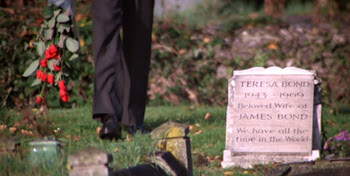As Election Day is coming up soon, let’s take a look back at Presidents in the movies. Specifically how in many films fictional Commander in Chiefs aren’t given names, they’re simply “The President.” Sometimes it makes sense as the President is a minor character who doesn’t need to be identified further. Other times, the leader of the free world gets enough screen time that it seems that the writers should’ve named the character. So let’s take a look at some significant examples of both kinds in this handy listicle:
This legendary actor is a good one to start with as apparently he was seen as Presidential early in his career with his role in John Ford’s YOUNG MR. LINCOLN in 1939. Fonda also portrayed a Presidential candidate in Franklin J. Schaffner’s THE BEST MAN (1964), but it was the two times he played “The President” in Sidney Lumet’s FAIL SAFE (also 1964), and Ronald Neame’s METEOR (1979) that put him on top here. It would be wrong to think he’s playing the same President in both films as one is a critically acclaimed cold war thriller, and other is poorly rated schlocky disaster flick, but it’s still tempting. Incidentally Richard Dreyfus played the role in the 2000 TV movie version of FAIL SAFE, and he didn’t have a name either.
Bruce Greenwood
The distinguished Greenwood played President John F. Kennedy in Roger Donaldson’s 2000 historical thriller THIRTEEN DAYS, and it looks like that groomed him to portray “The President” in Jon Turteltaub’s NATIONAL TREASURE: BOOK OF SECRETS (2007), and “President of the United States” (that’s how he’s credited) in KINGSMEN: THE GOLDEN CIRCLE (2017).
Stanley Anderson
Both of Michael Bay’s bloated ‘90s action thrillers, THE ROCK (1996), and ARMAGEDDON (1998) featured character actor Stanley Anderson as “The President,” which makes an argument for both movies being set in the same world. Can’t say that really matters though, as I doubt I’ll revisit them anytime soon to see if there are other clues as to whether this is true.
E.G. Marshall
This Presidential part in Richard Lester (and Richard Donner’s) SUPERMAN II (1981) is too substantial to not be named. Marshall, sporting a toupée so obvious that he was depicted with a price tag hanging from his hair in the Mad Magazine satire of the movie, has a considerable amount of screen-time, so what’s the deal with not giving him a name? In the fourth installment of the series, SUPERMAN IV (1987), Robert Beatty performed the duty of “The President” as well, so it seems that the makers of the Superman series just aren’t into naming Presidents.
Tim Robbins
Ronny Cox
Jonathan Pryce
In G.I. JOE: THE RISE OF COBRA (2009), and its sequel, G.I.JOE: RETALLIATION, Welsh born thespian Jonathan Pryce portrayed “The President,” I don’t have anything to say here as I haven’t seen these films, and didn’t know he was in them. Just seems like if they bring the character back for a second go around, a name would’ve been nice to add. Probably wouldn’t matter much to the movies though.
Gregory Peck
It was surprising for me to learn that this ace actor only played “The President” (credited here as just “President”) once and it was in such a minor movie, Mike Newell’s AMAZING GRACE AND CHUCK (1987). Peck’s immense gravitas has graced many roles as authority and historical figures, and even narrated a 1964 documentary on JFK (JOHN F. KENNEDY: YEARS OF LIGHTNING, DAYS OF DRUMS) so it would seem he’d be visiting the Oval Office multiple times. Alas it was not to be.
Eddie Albert
Another guy who could’ve taken on the part more than once, Albert had a memorable turn as “The President” in Joseph Ruben’s largely forgotten 1984 sci-fi horror flick DREAMSCAPE (wait, is it forgotten? I forgot it at least).
Billy Bob Thornton
He may be the least Presidential actor here, but as “The President” in Richard Curtis’ 2003 rom Com LOVE ACTUALLY, Thornton cleans up real good. The Commander in Chief here is a creepy combination of Bill Clinton and George W. Bush, something that the Arkansas born actor shows he can pull off effortlessly. Still, this is a character that just begs to have a name. I’m going to make one up – Maximillian Travis. How’s that?
Other actors who’ve been through a movie as a President with no name: Forrest J. Ackerman, Alan Alda, Michael Belson, James Caan, Roger Cross, Robert Culp, Jim Curley, William Devane, Sam Douglas, Tom Everett, Roy Gordon, Jimmy Hayward, Charles Macauley, Christopher McDonald, Zero Mostel, Michael Pate, Gordon Pinsent, William Prince, Chris Shields, John Wesley Shipp, Josef Sommer, Rod Steiger, Lewis Stone, Franchot Tone, Ivan Volkman, Sandy McCallum



















